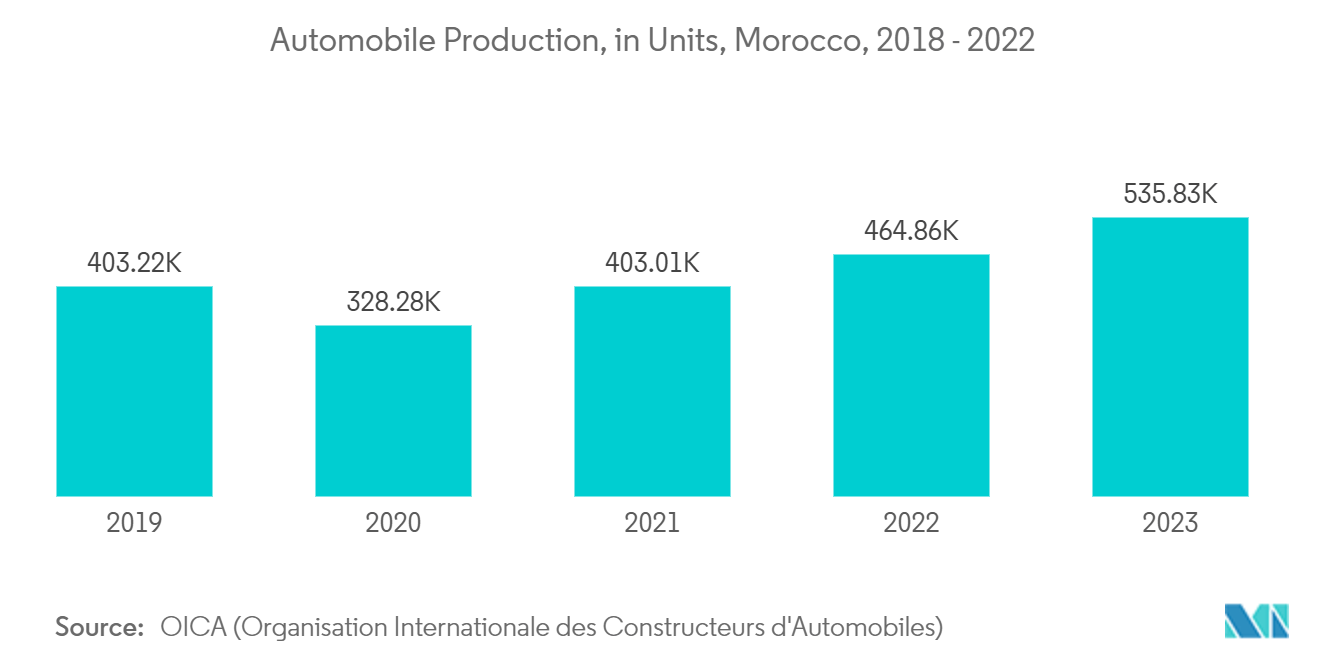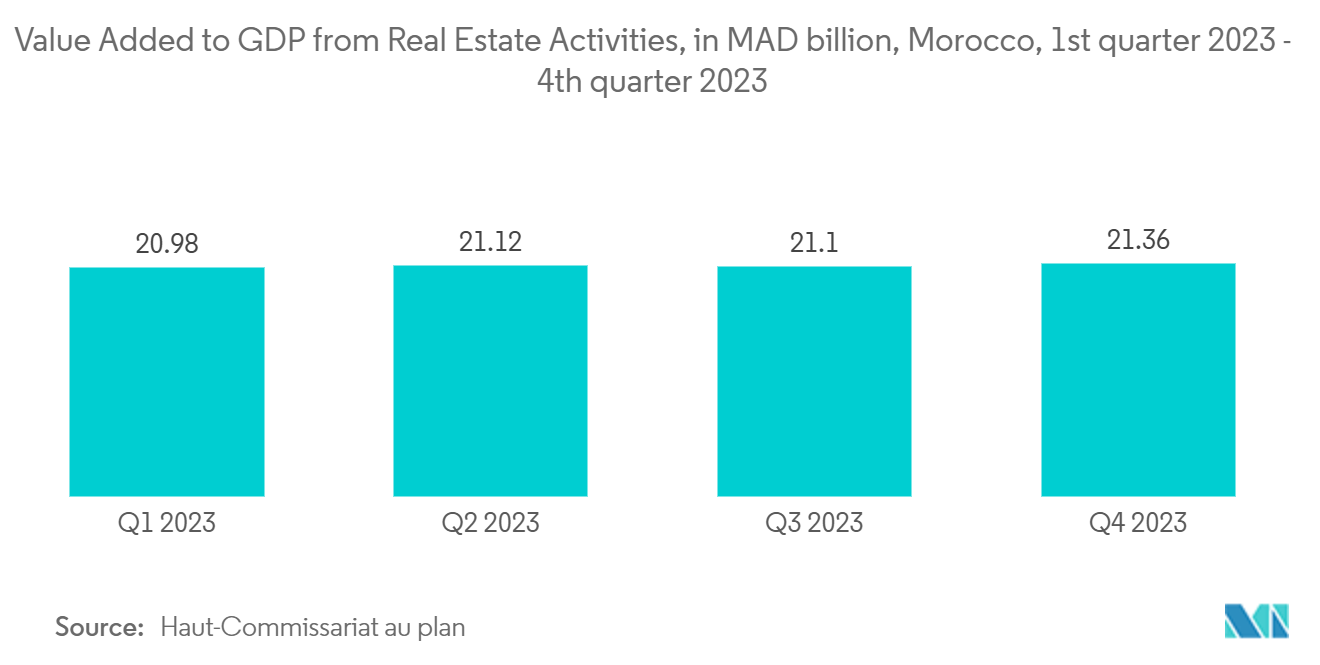Market Trends of Morocco Paints And Coatings Industry
Acrylic Resins Segment to Dominate the Market
- Acrylic resins rank among the most prevalent polymers in the paint and coatings sector. The primary variants of acrylics in use are thermoplastic and thermoset.
- Thermoplastic acrylics are divided into two categories: solution acrylics and acrylic latex coatings. In contrast, thermoset acrylics are used in a variety of applications, including finishes for metal furniture, automotive topcoats, maintenance coatings, appliances, and finishes for other original equipment manufacturers.
- Acrylic resins are prized for their transparency, vibrant colorability, and resistance to UV rays. Their affinity for waterborne systems ensures minimal VOC emissions.
- The construction industry predominantly utilizes acrylic coatings for premium finishes on roofs, decks, bridges, and floors. Given environmental concerns, especially regarding VOCs and air quality, there's a rising demand for water-based acrylic coatings.
- Acrylic coatings enhance surface hardness. When applied to walls, decks, and roofing, and combined with specific fluids, they offer elastomeric finishes that bolster UV resistance.
- Morocco's construction sector accounts for about 6% of its GDP. According to the future insights presented by the Minister of Equipment and Water in February 2024, public investment in the country’s construction is set to increase by 56% in 2024 compared to 2023. Moreover, in March 2024, an underwater tunnel costing around GBP 5.1 billion (~USD 6.48 billion) could be built. The project would aim to link Europe and Africa by offering a new direct route between Spain and Morocco. Such developments are poised to elevate the demand for acrylic resins.
- Beyond construction, acrylic paints and coatings see applications in marine vessels, automotive, electrical products, and machinery. For instance, OICA (Organisation Internationale des Constructeurs d'Automobiles) reported a 15% rise in Morocco's automobile production in 2023, totaling 536 thousand units. This uptick is anticipated to drive demand for acrylic paints.
- According to eCommerceDB GmbH, in 2023, ikea.com led Morocco's furniture market with sales of USD 3.6 million. This prominence in the furniture sector hints at a rising demand for acrylic resins.
- Morocco’s Port of Tangier Med, ranked fourth globally in the World Container Port Performance Index (CPPI) for 2023, continues to be a dominant force in both Africa and Europe. Handling 8.6 million containers in 2023, marking a 13.4% rise, and witnessing a 17% increase in vessel transits, the port's revenue surged by 18.3% to USD 1 billion in Q1 2024. Such marine sector growth signals an uptick in demand for acrylic resins.
- Given these dynamics, the demand for acrylic resin-based paints and coatings is set to lead the market in the coming years.

Architectural Segment to Dominate the Market
- Architectural paints, also known as external masonry or exterior wall coatings, are primarily utilized for painting both the exteriors and interiors of buildings. These paints encompass a variety of products, including primers, varnishes, sealers, stains, and both interior and exterior paints.
- These coatings find extensive application in residential, institutional, commercial, and industrial buildings, offering properties such as resistance to mold, algae growth, and crack-bridging capabilities.
- In Morocco, architectural and decorative coatings dominate the market, driven largely by robust residential and commercial construction activities. These decorative paints, used for both aesthetic interior and exterior applications, come in oil- or water-based formulations.
- Despite a moderating economic growth, Morocco's housing market remains subdued. Property prices have stabilized, transaction volumes are low, and the mortgage market is contracting. As of Q1 2024, the nationwide residential real estate price index (REPI) saw a modest uptick of 0.7%. This follows a year-on-year increase of 0.8% in Q4 2023, stagnation in Q3, a 0.5% decline in Q2, and a slight 0.2% growth in Q1, according to data from Bank Al-Maghrib, Morocco's central bank.
- Looking ahead to 2024, public procurement in Morocco's construction sector is projected at MAD 64 billion (~USD 6.4 billion). This marks a significant 56% increase in investments compared to 2023, as reported by the Moroccan Minister of Equipment and Water. The surge in construction and public works investments is attributed to structural programs, notably the general reconstruction and rehabilitation initiative for areas impacted by the Al Haouz earthquake. These areas will see infrastructure enhancements, complemented by an ambitious five-year development program featuring structural projects worth MAD 120 billion (~USD 12 billion).
- With Morocco witnessing a 33% surge in tourist arrivals in 2023, totaling approximately 14.5 million, the demand for hotel construction is set to rise, subsequently boosting the market for architectural coatings. This influx in tourism translated to record revenues of MAD 105 billion (USD 10.5 billion), marking a 12% increase from the previous year, as reported by the Moroccan Ministry of Tourism.
- Morocco's ambitious 2030 port strategy, with an investment of nearly USD 7.5 billion, aims to upgrade and expand 27 ports along its Atlantic and Mediterranean coasts. As part of this strategy, Morocco's National Ports Authority (ANP) allocated nearly USD 600 million from 2018-2023, focusing on large-scale infrastructure projects to adapt to evolving maritime transport and trade dynamics. This initiative is poised to bolster demand in the paints and coatings market.
- Given these dynamics, the architectural segment in Morocco is set for growth, driving up the demand for paints and coatings market during the forecast period.


